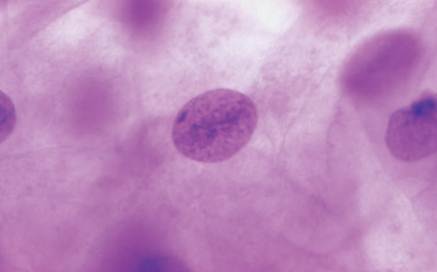


 النبات
النبات
 الحيوان
الحيوان
 الأحياء المجهرية
الأحياء المجهرية
 علم الأمراض
علم الأمراض
 التقانة الإحيائية
التقانة الإحيائية
 التقنية الحيوية المكروبية
التقنية الحيوية المكروبية
 التقنية الحياتية النانوية
التقنية الحياتية النانوية
 علم الأجنة
علم الأجنة
 الأحياء الجزيئي
الأحياء الجزيئي
 علم وظائف الأعضاء
علم وظائف الأعضاء
 الغدد
الغدد
 المضادات الحيوية
المضادات الحيوية|
Read More
Date: 10-11-2015
Date: 27-10-2015
Date: 10-11-2015
|
Sex Chromosomes
Sex chromosomes are particular chromosomes that are involved in determining the sex of an organism. In the cells of humans and many other organisms the sex chromosomes consist of a pair of chromosomes called the X and Y chromosomes. The X and Y chromosomes were first discovered in beetles by Nettie Stevens in 1906. She noticed that cells of female beetles had identical looking pairs of each of their several chromosomes, but that male beetles had one pair in which the chromosomes were very different in appearance from each other. She called these two chromosomes the X and the Y, and found that female beetles differed from males in containing two X chromosomes. The same situation is also found in humans where females are XX and males are XY.

A Barr body—a condensed X chromosome—in a female squamous epithelium cell at interphase.
The X and Y chromosomes in humans are also very different in appearance, with the X chromosome being considerably larger than the Y. With the exception of only about nine shared genes, the X and Y chromosomes do not contain the same genes, unlike the other twenty-two pairs of human chromosomes in which members of a pair share all the same genes. The Y chromosome contains the genes for determining a male pattern of development, and in the absence of a Y chromosome an embryo will follow a female pattern of development.
The sex of an individual is determined by which paternal sex chromosome (X or Y) is inherited at fertilization. Eggs and sperm, as reproductive cells, each contain only one of the two sex chromosomes as a result of having undergone meiosis, a form of cell division that produces daughter cells containing only one member of each chromosome pair. All eggs therefore contain an X chromosome, but half of sperm will contain an X chromosome and the other half a Y chromosome. If an egg is fertilized by a sperm carrying an X chromosome an XX or female embryo will result, while fertilization of the egg by a Y-bearing sperm will produce an XY or male embryo. In some organisms, including birds, the female contains the unlike pair of sex chromosomes. Thus, in these cases the mother determines the sex of the offspring.
Since cells in a male contain a single X chromosome and cells in a female contain two X chromosomes, females contain twice as many copies of the genes on the X chromosome per cell as do males. To equalize the dosage of X chromosome genes between the two sexes, one of the two X chromosomes in each cell of all female mammals is inactivated early in embryonic development by becoming very tightly wound up or condensed. Most of the genes on the condensed X chromosome cannot be expressed. Since males carry only one copy of each X-linked gene, they are much more likely to suffer from disease if they inherit a defective gene. X-linked disorders include some forms of color blindness, Duchenne’s muscular distrophy, and some types of hemophilia.
The inactivation of an X chromosome in the cells of a developing female embryo occurs randomly, so that about half of the cells express the genes in one X chromosome and half express the genes in the other X chromosome. Once a particular X chromosome has been inactivated in a cell, it will remain inactivated in all of the descendants of that cell. If a female mammal has different forms or alleles of a particular gene on each of her two X chromosomes, then about half of her cells will express one of the alleles and about half the other allele. An example of such a genetic mosaic is a calico cat, carrying an allele for orange fur color on one X chromosome and an allele for black fur color on the other X chromosome. The result is a characteristic coat of mottled orange and black patches of fur. Since this type of genetic mosaicism requires the presence of two X chromosomes, calico cats are normally always female.
Chromosomes are ordinarily visible under a microscope only when the cell is dividing. However, when nondividing cells are treated with stains that bind to chromosomes, a darkly staining body is visible in the nuclei of cells from females but not in cells from normal males. This body is actually the condensed X chromosome, and it is called a “Barr body” after its discoverer, Murray Barr. In 1961 Mary Lyon proposed that the condensation of the X chromosome into a Barr body was a mechanism for inactivating the genes on the chromosome. This is called “The Lyon Hypothesis,” in her honor. The presence or absence of a Barr body in cells is used in medical and criminal forensics to determine and legally define the sex of an individual.
References
Audesirk, Teresa, and Gerald Audesirk. Biology: Life on Earth. Upper Saddle River, NJ: Prentice Hall, 1996.



|
|
|
|
تفوقت في الاختبار على الجميع.. فاكهة "خارقة" في عالم التغذية
|
|
|
|
|
|
|
أمين عام أوبك: النفط الخام والغاز الطبيعي "هبة من الله"
|
|
|
|
|
|
|
قسم شؤون المعارف ينظم دورة عن آليات عمل الفهارس الفنية للموسوعات والكتب لملاكاته
|
|
|